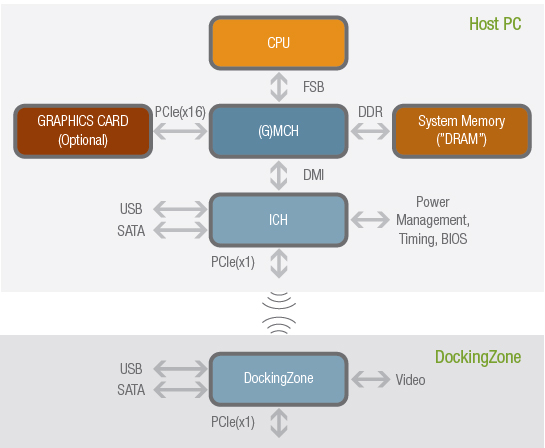PCI Express is one of the most important technologies of modern computers, connecting components at high bandwidths. There is now a wireless version in development, called wPCIe, that will use the 60 GHz band and replace all cables.
The first specification of wireless PCI Express will be capable of transmitting wireless data at speeds up to 625 MB/s, but the company Wilocity, that together with Atheros is behind wPCIe, says that it will be able to reach speeds up to 7Gbps, or 875 MB/s soon.
The idea with the technology is to remove all cables and gather all external interfaces over one and the same standard. Something Wilocity says is the next step in the wireless evolution.
Unlike WiFi that is just replacing the Ethernet cable, wPCIe will be capable of replacing anything from docking stations, external storage solutions and other interfaces like USB, audio and video.

The technology builds on a wireless transmitter in the computer that then communicates with a wireless docking station over the 60 GHz band. This way you will be able to move all interfaces from the computer to the discrete docking station called DockingZone.
This unit has, beside a 60 GHz receiver, interfaces for USB 3.0, SATA, eSATA, FireWire, audio inputs and can even house a graphics circuit. For computers and the operating system these components looks like like they are inside the computer, unlike other wireless technologies. There is also compatibility with the 2.5 GHz and 5.0 GHz bands, which makes the wireless network adapters compatible with regular WiFi networks.
For example, notebooks currently on the market can only offer graphics capabilities based on their internal graphics processor. With wPCIe, notebook graphics can be enhanced with a more powerful graphics processor implemented remotely in the DockingZone or integrated into a high performance monitor, thus greatly improving the native video performance.
We look forward to hearing more about the new wPCIe format and the first products supporting the technology.















